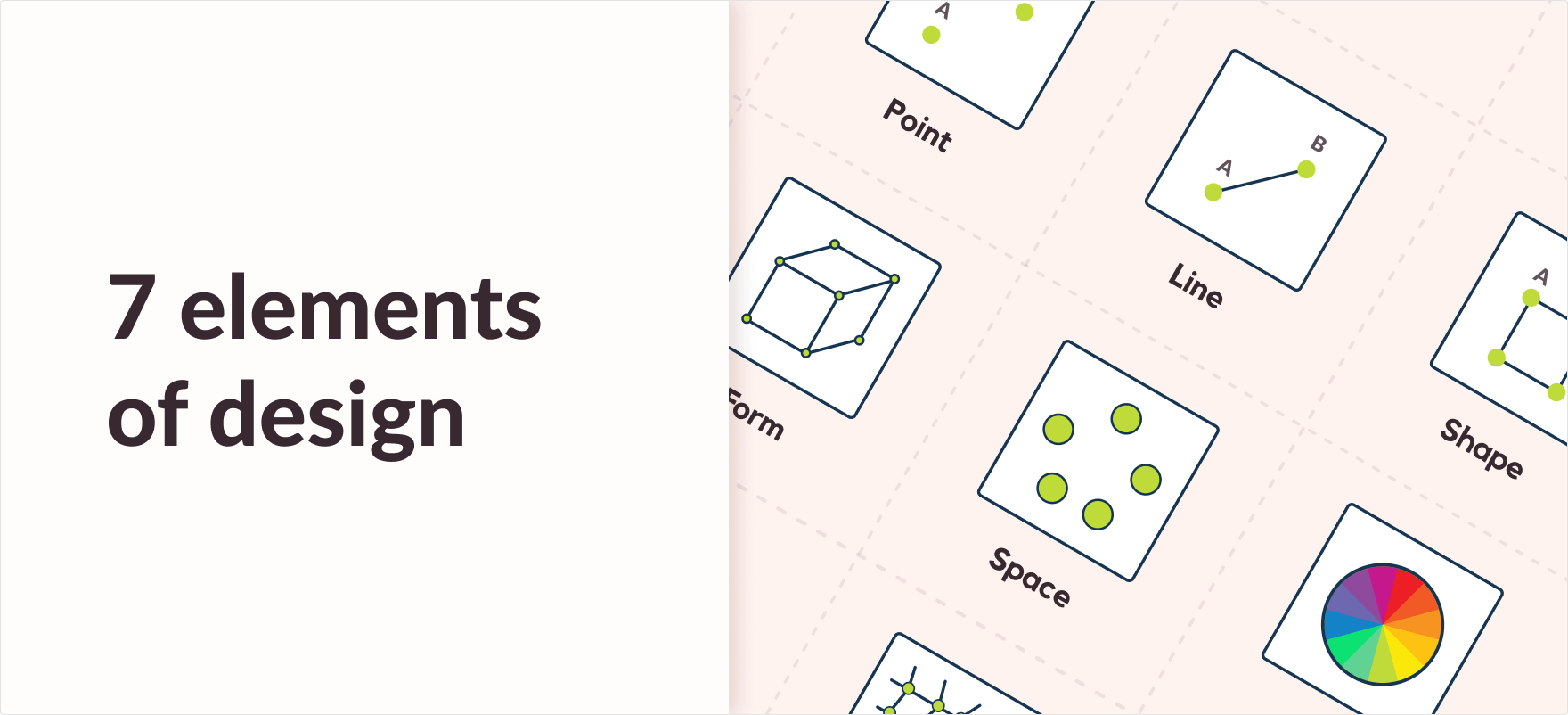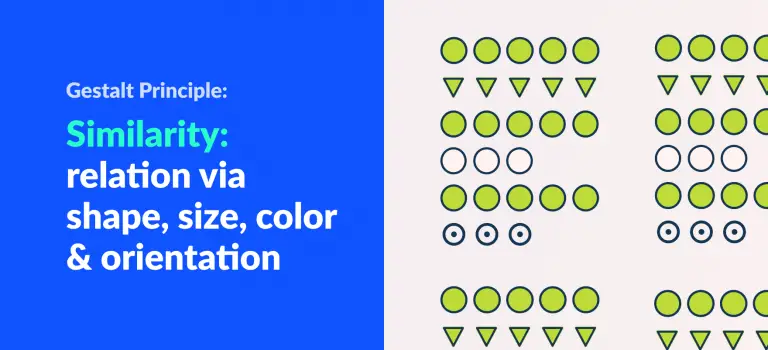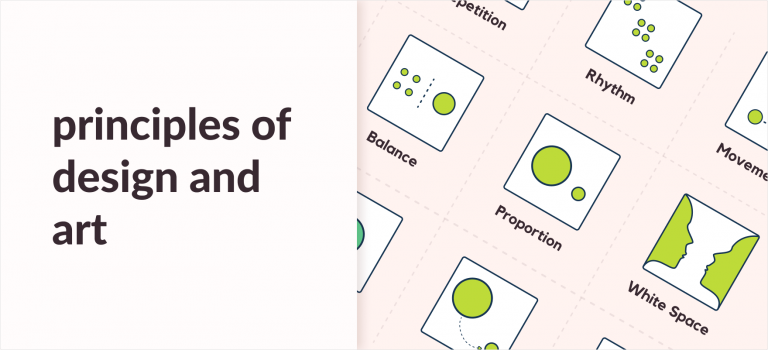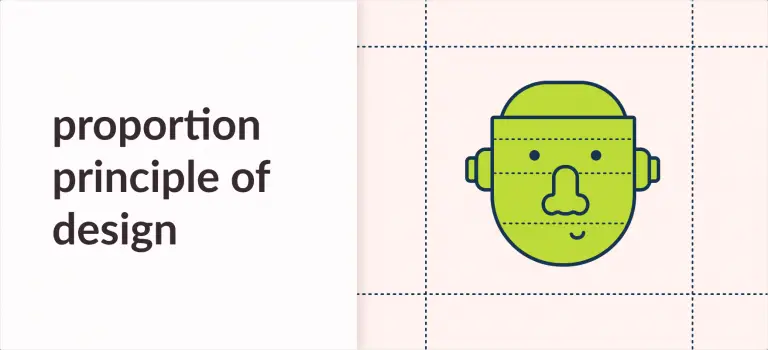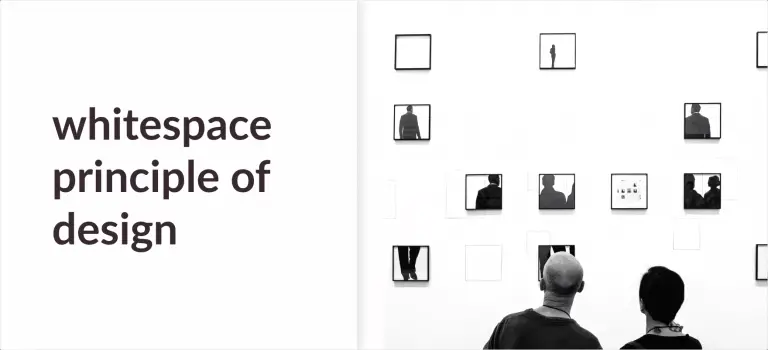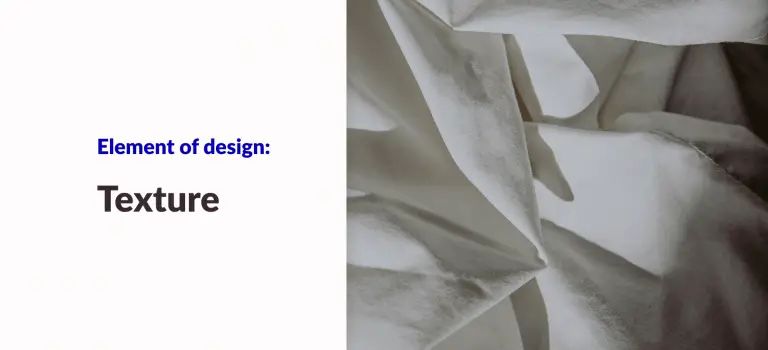The 7 Elements of Design and Art [Infographics Included]
What are the 7 Elements of Design and Art? The 7 elements of design are Point, Line, Shape, Space, Form, Color, and Texture.
In this article, we will be looking at what each of the elements of design and art is, their detailed definitions, and more.
Below is a handy infographic for the 7 elements of design:
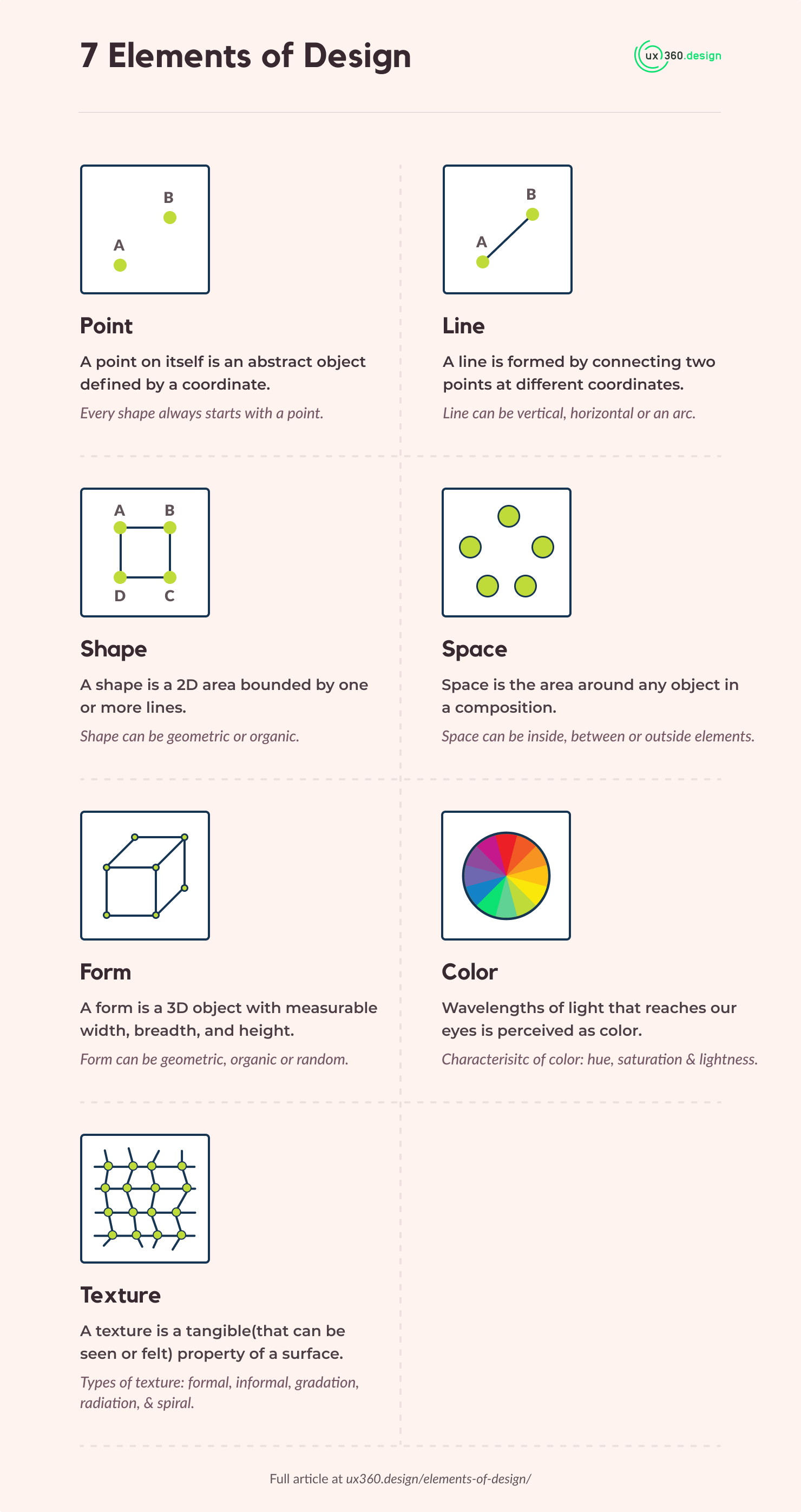
Quick Links
1. Point
A point in itself is an abstract object which is not tangible(seen or be felt).
A point doesn’t have an area. Hence, a point’s coordinates define it.

In the figure above, point A is at coordinate (1,1). And point B is at (3,2).
Every other shape or composition always starts with a point.
2. Line
A line is formed by connecting two points at different coordinates. This is said to be a line with two endpoints.

Alternatively, a line is several points that are next to one another in a given space.
Line can be vertical, horizontal, or arc.

A line is an abstract object that doesn’t exist in nature. But we observe can observe lines in real life such as individual strings in a spider web.
In design, lines are used to create patterns and are also the foundations for creating shapes.
To learn more about how to use lines in design, read my article on “Line: Element of Design”.
3. Shape
The shape is a 2D area bounded by one or more lines.

Let’s create a simple shape using points and lines. We created a square in the above figure. Similarly, other shapes can also be created using the same technique. We categorize them under geometrical shapes.
Shape need not only be geometrical but can also be organic. The shape formed by living beings is known as organic shapes. Hence, organic shapes are random and irregular.
Example: The organic shape formed by a microorganism: Amoeba.

4. Space
The area around any object in a composition is space.
Space can be used to isolate an element in a composition. The blank space around an object is known as white space(negative space).
Now we arrange the objects sparsely to create a space between them.

Let’s just have one circle now. Enlarging it and filling out the outer area will create a space within it.

5. Form
The exterior of an object gives it form. A form is a three-dimensional object with measurable width, breadth, and height.
Let’s take a cube as an example:

There are three types of form:
- Geometric forms: Forms based on mathematics. A combination of points, lines, and surfaces creates geometric forms.
- Organic forms: Forms that are created or derived from living organisms.
- Random forms: Abstract shapes create random forms.

6. Color
Only a part of the light spectrum reflects when light falls on a surface. The part which reaches our eyes is perceived as the color of the object.
The three characteristics of color are:
- Hue: Hue is the actual color value of an object. In the circle below, it has a red hue.

- Saturation: Adding white to a given hue will determine the saturation of the color. If we want to create a very saturated image then we add as little white as possible. Now let’s add some white to make it less saturated.

- Lightness: Lightness determines how light or dark a color is. Adding black to a given hue will determine its lightness.
7. Texture
A texture is a tangible(that can be seen or felt) property of a surface.
The texture is primarily identified as the ridges in a surface and the formation of a pattern.
Patterns in a surface are used as a decoration structure in design.
The formation of texture can be associated with abstract structures such as:

- Formal: Geometrical or mathematical pattern. Or, a texture that is evenly distributed.
- Informal: Random in nature.
- Gradation: Texture having a gradual change in size or form at even rate.
- Radiation: Repetitive structure with the unit situated around a common center.
- Spiral: Concentric shape with unequal distance from the center.
To learn more about how to use texture in design, read my article on “Texture”.
Further Reading:
If you are looking to research further on design foundations, then I would recommend reading up on the following articles:

